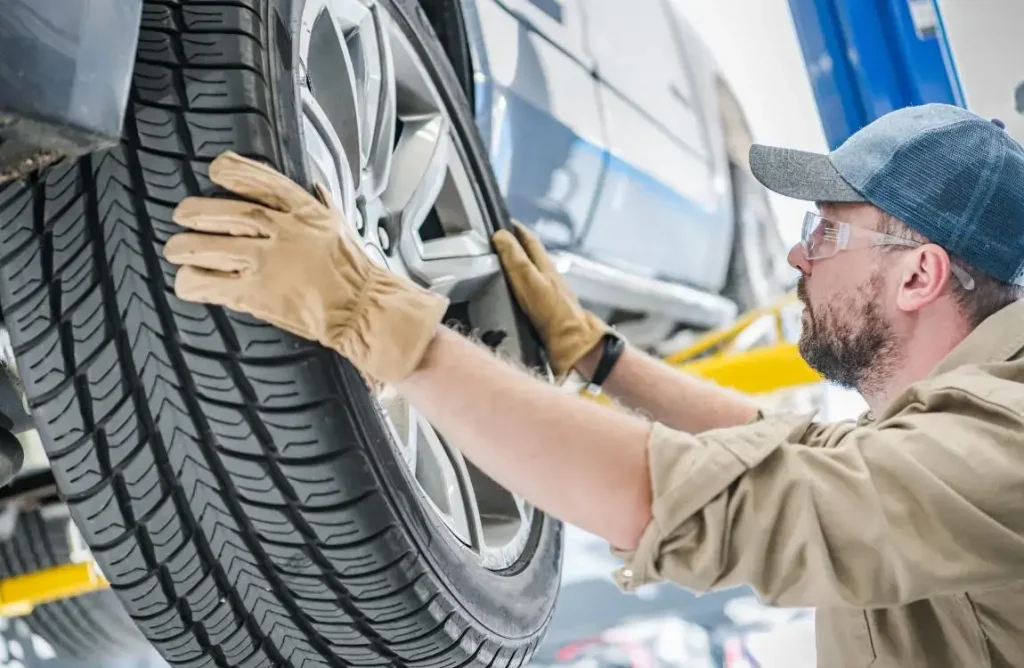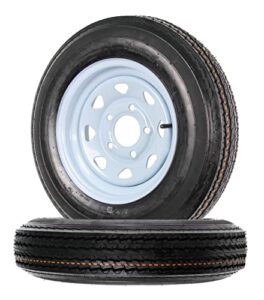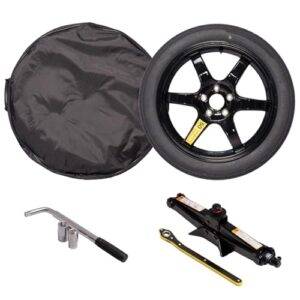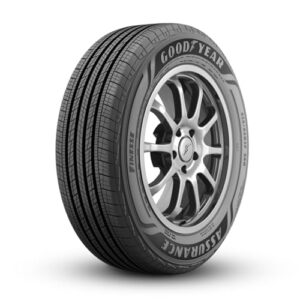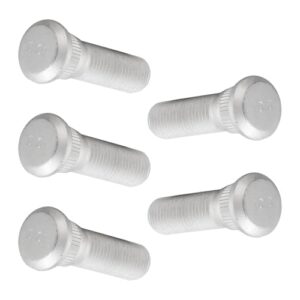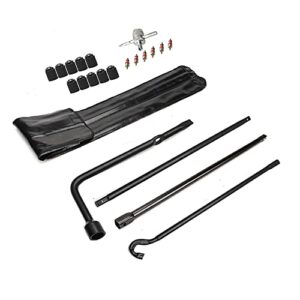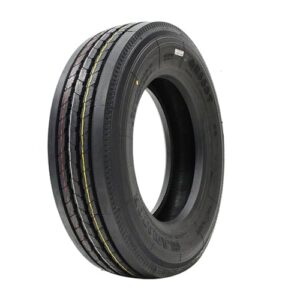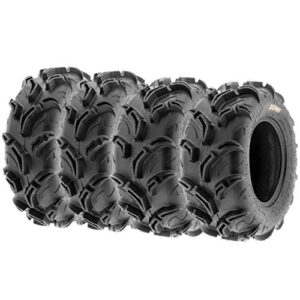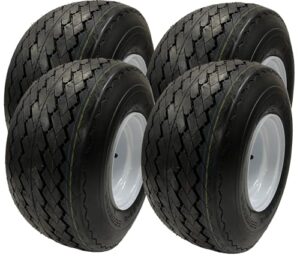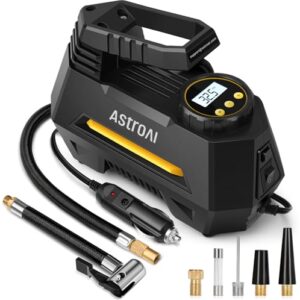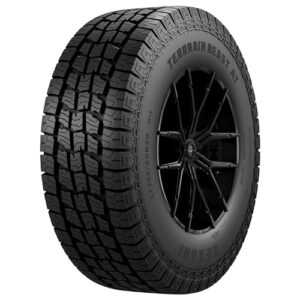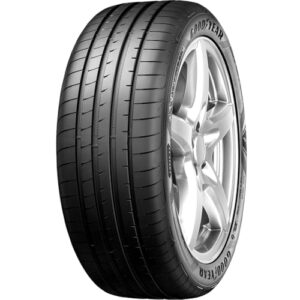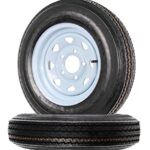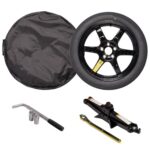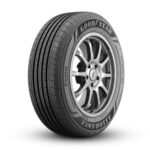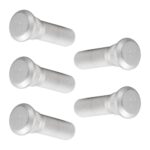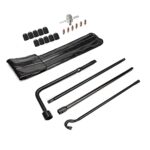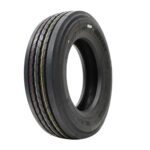The Michelin Pilot Sport All Season 4 excels as the best all-season performance tire for versatility and grip. The Pirelli P Zero All Season Plus offers exceptional performance and durability for drivers.
Finding the ideal all-season performance tires can be a game-changer for car enthusiasts and everyday drivers alike. Quality tires can dramatically improve your vehicle’s handling, safety, and efficiency throughout the year. Among the countless options available, the Michelin Pilot Sport All Season 4 stands out due to its advanced technology that optimizes traction in various conditions.
Meanwhile, the Pirelli P Zero All Season Plus marries longevity with high-performance capabilities, making it a popular choice among drivers. These tires are designed to meet the demands of performance vehicles while delivering reliable all-weather capabilities, ensuring year-round driving confidence. Leading tire manufacturers continue to innovate, focusing on developing tires that provide optimal balance between dry and wet grip, comfortable ride quality, and extended tread life.
Choosing Best All-Season Performance Tires
Finding the perfect all-season performance tires for a vehicle requires understanding vehicle needs and weather conditions. With countless options in the market, choosing the right tire that offers optimal traction and durability throughout various climates becomes crucial. This guide will delve into considerations for different vehicle types, how to assess performance in varying climates, and the role of tread patterns and tire composition in ensuring superior grip.
Considerations For Different Vehicle Types
Each vehicle type, from sedans to SUVs, has unique requirements when it comes to tires. Weight distribution, handling characteristics, and power output influence tire choice significantly.
- Sedans – Prioritize comfort and fuel efficiency with moderate tread depth.
- SUVs – Require tires with higher load capacity and aggressive tread for varying terrains.
- Sports Cars – Need tires with enhanced grip and precision for performance handling.
- Trucks – Look for durability and traction in heavy-duty situations.
Key Factors For Tire Performance In Various Climates
All-season tires are designed to perform well in a range of conditions, including dry roads, wet surfaces, and light winter conditions. The key is to consider the most common weather patterns in your area.
| Climate | Performance Factor |
|---|---|
| Mild Climates | Emphasize longevity and wet traction. |
| Variable Climates | Choose tires with good performance in diverse conditions. |
| Colder Regions | Priority on snow and ice traction without compromising on dry and wet grip. |
How Tread Pattern And Tire Composition Affect Grip
The tread pattern and tire composition play a pivotal role in ensuring a tire’s grip and overall performance. A well-designed tread pattern disperses water efficiently to avoid hydroplaning, while the rubber composition adjusts to temperature variations for consistent performance.
- Symmetrical tread patterns – Offer balanced performance and longevity.
- Directional tread patterns – Excel in water evacuation, crucial for preventing hydroplaning.
- Asymmetrical tread patterns – Combine dry and wet road performance, ideal for sportier vehicles.
The rubber compounds used in tire composition must provide flexibility in cold temperatures and stiffness in warm conditions to maintain optimal grip year-round. Advanced compounds often include silica, which enhances traction on wet surfaces while also improving fuel economy.

Unbeatable Grip: Performance Tires Defined
For driving enthusiasts and safety-conscious drivers alike, the term performance tires evokes images of vehicles hugging curves with precision and accelerating with ease, irrespective of the weather. These tires are the unsung heroes that connect the raw power of your vehicle to the road. Offering superior handling, stability, and traction, performance tires are tailored for those who demand the best from their driving experience in every season. Let’s delve into the world of performance tires, and uncover the secrets behind their all-season capabilities and the technology that grants them their much-acclaimed grip.
The Role Of Tire Technology In Grip And Handling
At the heart of performance tire excellence is cutting-edge tire technology. Manufacturers invest heavily in research and development to create tires that provide an optimal balance between grip and durability. The following are crucial aspects:
- Advanced Rubber Compounds: Performance tires feature rubber compounds engineered to perform in a wide range of temperatures. These compounds remain flexible to retain grip in cold conditions while resisting wear in warmer climates.
- Refined Tread Patterns: Sophisticated patterns with strategic grooves and sipes enhance water evacuation, reducing the risk of hydroplaning and maintaining contact with the road.
- Structural Rigidity: Reinforced sidewalls and robust construction improve cornering ability, allowing drivers to feel confident during aggressive maneuvers.
- Precise Construction: Tires are built with precision to ensure uniformity, which directly impacts handling and treadwear.
A synergy of these elements allows performance tires to provide exceptional handling and confidence-inspiring grip, regardless of the driving conditions.
Analyzing All-season Versus Season-specific Tire Designs
When selecting tires, a common dilemma is choosing between all-season models and season-specific options. Both have distinct advantages, which are outlined in the comparison below:
| All-Season Performance Tires | Season-Specific Performance Tires |
|---|---|
|
|
All-season performance tires balance flexibility and specialization, providing a reliable year-round solution without the need for seasonal tire changes. Conversely, season-specific tires maximize performance tailored to specific weather conditions, offering unrivaled grip and handling when it counts.
Performance Meets Versatility
For drivers who demand excellence from their vehicles year-round, selecting the ideal set of tires is essential. The right choice brings together agility on the road, regardless of rain or shine. This post delves into the best all-season performance tires, spotlighting a harmonious blend of durability and dynamic handling. These options don’t just meet expectations; they redefine them, transcending the typical boundaries of seasonal tire constraints.
Balancing Tire Longevity With Performance
Finding a tire that offers both prolonged wear and high-end performance can feel like seeking a needle in a haystack. Yet, advancements in tire technology have paved the way for options that embody this dual nature.
- Improved tread life: Look for composite compounds and reinforced sidewalls.
- Consistent traction: Seek out designs with optimized contact patches and advanced tread designs.
- Fuel efficiency: Consider low rolling resistance for better mileage.
By prioritizing these features, drivers unlock the pleasure of cruising on tires built to last without sacrificing the grip and response crucial to performance driving.
Benefits Of All-season Tires For Diverse Weather Conditions
Seasonal shifts bring a range of driving challenges, but all-season tires stand ready to confront them. Their adaptable nature equips vehicles for a smooth journey across a variety of environments:
| Season | Benefit |
|---|---|
| Spring | Rapid water expulsion to reduce hydroplaning in wet conditions. |
| Summer | Heat-resistant compounds maintain performance on hot asphalt. |
| Fall | Enhanced grip during cooler, damp days. |
| Winter | Flexible sipes and tread patterns battle light snow and slush. |
All-season tires offer peace of mind through their versatility, ensuring that a sudden weather switch won’t leave you stranded or scrambling for a tire change.
Top Features Of Performance Tires
When you’re in the market for new all-season performance tires, understanding the key features that define their capability is essential. Performance tires are engineered to provide an optimal balance between traction, handling, longevity, and speed capabilities. With advanced technology and design, these tires ensure that drivers experience superior road performance in various conditions. Let’s delve into the critical aspects that set performance tires apart and what to look for when selecting the best all-season options for your vehicle.
Understanding Tire Ratings And What They Mean For Grip
Tire ratings are a vital aspect of a tire’s performance characteristics. They are influenced by the tire’s composition and tread design, factors that directly impact the grip a tire can offer:
- Traction Ratings: Indicate a tire’s ability to stop on wet pavement, assessed by the letters AA, A, B, or C, with AA being the highest rating.
- Temperature Ratings: Reflect the tire’s resistance to heat accumulation under speed, with A, B, or C ratings, where A represents the best performance.
- Treadwear Ratings: Provide an estimate of the tire’s longevity based on standardized testing, with higher numbers indicating a longer-lasting tire.
By understanding these ratings, you’re equipped to choose a tire that provides exceptional grip and performance for every season.
The Importance Of Speed Ratings And Load Indexes
Tires are not just designed to connect your vehicle to the road; they are precision-engineered to support your vehicle’s load and to travel at specific maximum speeds safely. Speed ratings and load indexes are integral to this, offering insight into a tire’s capabilities:
| Speed Rating | Maximum Speed |
|---|---|
| V | 149 mph (240 km/h) |
| W | 168 mph (270 km/h) |
| Y | 186 mph (300 km/h) |
Load indexes, on the other hand, specify the maximum weight a tire can carry. Adhering to these indexes ensures your vehicle maintains optimal handling and avoids undue stress on the tires which could lead to premature wear or failure.
Selecting the right tire with the appropriate speed rating and load index is crucial for not only performance but also for the safety of your vehicle. Opt for tires that match or exceed the specifications recommended by your vehicle’s manufacturer.
Leading Brands In All-Season Tire Technology
All-season performance tires are the workhorses of the automotive world, offering a balanced blend of wet and dry traction, longevity, and a comfortable ride in a wide range of weather conditions. The technology behind these tires evolves with each passing year, and several brands lead the charge in innovation and quality. From the incorporation of new rubber compounds to advanced tread patterns, the top tire manufacturers have designed products that stand the test of time and terrain.
A Comparison Of Market Leaders And Their Winning Tire Models
The tire industry is competitive, with several brands vying for the title of the best all-season performance tires. Let’s explore some of the market leaders and their standout models:
| Brand | Model | Key Features |
|---|---|---|
| Michelin | CrossClimate2 | Excellent in wet and dry conditions, long tread life |
| Continental | ExtremeContact DWS06 | Superb handling, enhanced snow performance |
| Bridgestone | Turanza QuietTrack | Advanced noise reduction, all-weather reliability |
| Goodyear | Assurance WeatherReady | Severe weather-rated, optimized tread pattern |
| Pirelli | P Zero All Season Plus | Dynamic handling, high-speed capability |
Customer Satisfaction And Expert Reviews
Evaluating customer satisfaction and expert reviews is crucial when selecting the best all-season performance tire. These insights offer real-world feedback and professional analysis that go beyond manufacturer claims:
- Online Ratings: Websites with customer reviews like Tire Rack and Amazon provide valuable star ratings that reflect the average consumer’s experience.
- Testimonials: First-hand accounts from drivers reveal how tires perform under various conditions, offering insights into their strengths and potential weaknesses.
- Professional Tests: Automotive publications and organizations conduct comprehensive testing, providing detailed reports and recommendations.
- Satisfaction Surveys: Surveys from authoritative bodies like J.D. Power gauge owner satisfaction across various tire attributes.
These resources combined equip buyers with a thorough understanding of a tire’s performance, ensuring the decision made is an informed one.
Maximizing Tire Lifespan And Grip
Maximizing the lifespan and grip of all-season performance tires not only ensures your safety but also promotes a better driving experience. Regular maintenance and timely replacement are key to achieving superior tire performance season after season. Stick to the following guidelines to extend the life of your tires and maintain their superior grip on the road.
Maintenance Tips For Increasing Tire Performance
Proper tire maintenance goes a long way in preserving tread life and improving grip. Adhere to these practices to keep your tires in top-notch condition:
- Regular Tire Rotation: Rotate your tires every 5,000-8,000 miles to ensure even wear and tear.
- Correct Tire Pressure: Check tire pressure monthly. Proper inflation is crucial for performance and fuel efficiency.
- Alignment Checks: Have your vehicle’s alignment checked bi-annually to avoid uneven wear on your tires.
- Balanced Tires: Balance your tires to prevent vibrations and irregular tire wear.
- Inspections: Regularly inspect your tires for signs of damage, such as cuts or bulges.
When To Consider Tire Replacement For Optimal Safety
To ensure ongoing safety on the road, stay vigilant on when to replace your all-season performance tires:
- Tread Depth: Once the tread depth of your tires falls below 2/32 of an inch, it’s time for a replacement.
- Age of Tires: Tires aged 6 years or older may require replacement, regardless of tread life, due to compound degradation.
- Signs of Wear: Look out for uneven tread wear, which could indicate alignment or suspension issues.
- Performance Decline: If your tires no longer provide adequate traction, especially in wet conditions, consider replacing them.
- Visible Damage: Replace tires with visible damage such as cuts, cracks, or bulges immediately.
Remember: Addressing tire concerns early will maintain vehicle performance and enhance driver safety. Use this guide to assess the condition of your all-season performance tires and take action when necessary.

Frequently Asked Questions
What Defines Performance Tires?
Performance tires are designed to deliver superior handling, traction, and stability, especially at higher speeds and during cornering maneuvers.
How Long Do All Season Tires Last?
All-season tires typically last between 50,000 to 70,000 miles, depending on driving habits, maintenance, and tire quality.
Can All Season Tires Handle Snow?
All-season tires offer moderate snow traction but are not as effective as winter tires in heavy snow and icy conditions.
Conclusion
Selecting the right all-season performance tires can elevate your driving experience year-round. Our review highlights top-tier options renowned for their durability, comfort, and safety. Remember, the perfect fit for your vehicle blends performance with endurance. Drive confidently in all conditions by choosing a tire from our recommended list.
Make every journey smooth and secure.


